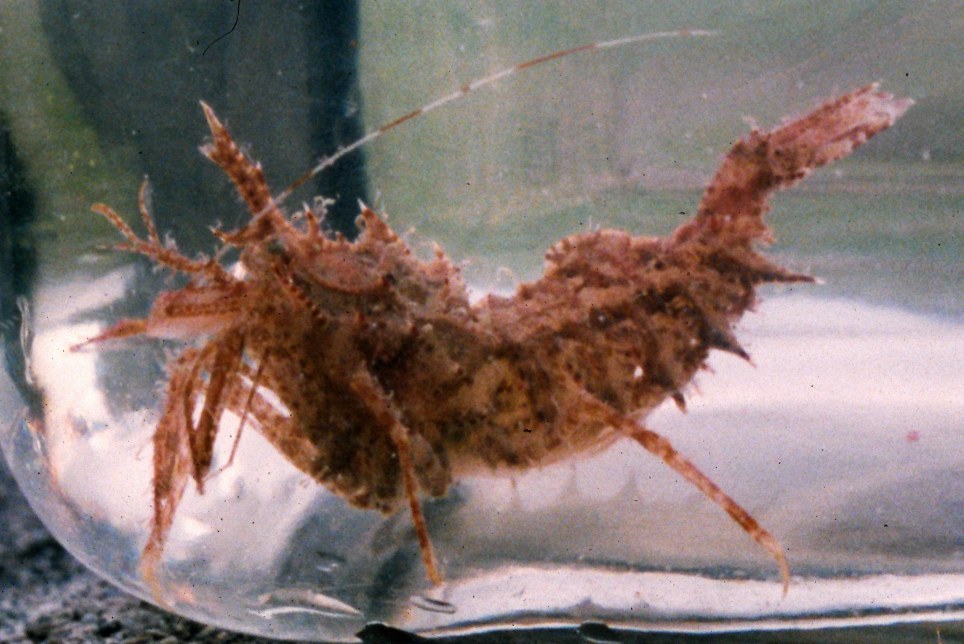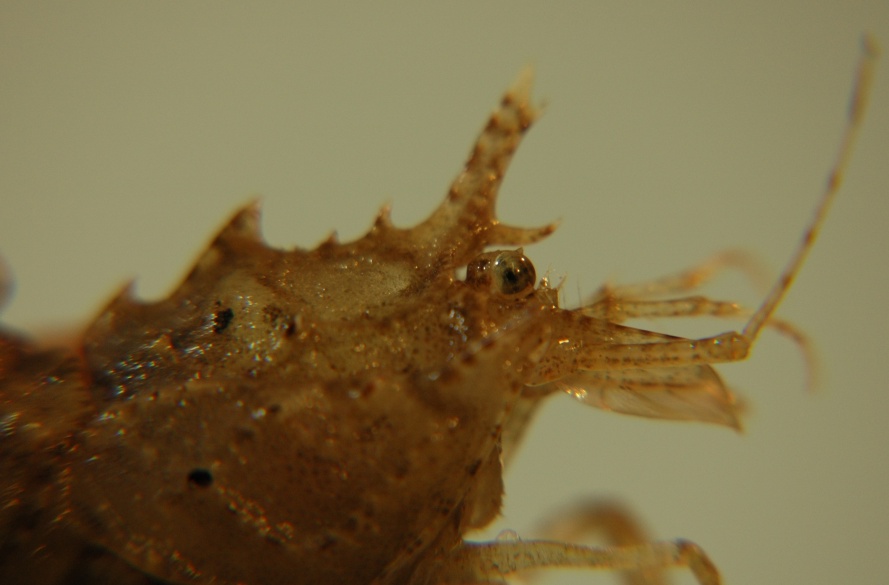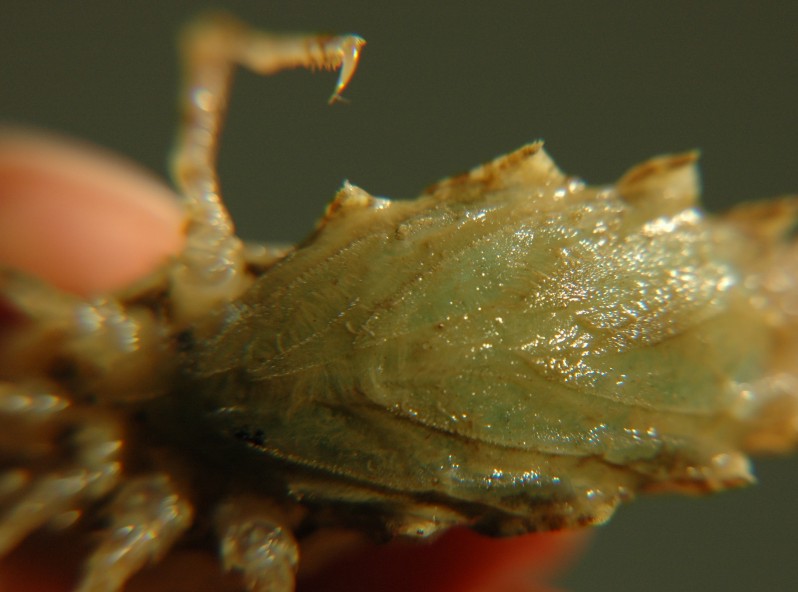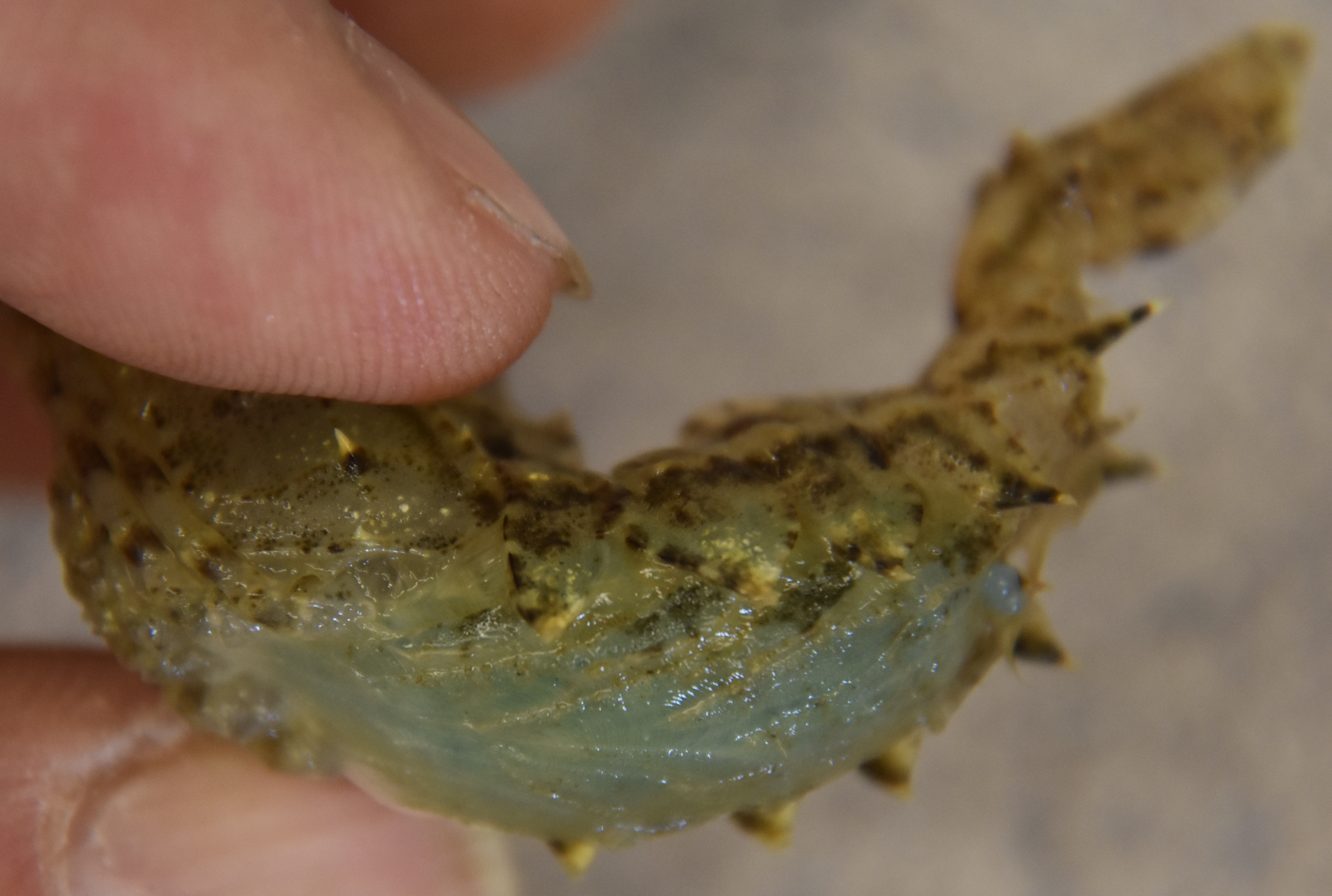Paracrangon echinata Dana, 1852Common name(s): Horned shrimp |
|
| Synonyms: |  |
| Phylum Arthropoda
Subphylum Crustacea Class Malacostraca Subclass Eumalacostraca Superorder Eucarida Order Decapoda Suborder Pleocyemata Infraorder Caridea Family Crangonidae |
|
| Paracrangon echinata captured
at 100 m depth in San Juan Channel.
The arched posture with spines exposed is a typical defense "cataleptic" posture, which likely helps protect it from predation. Length about 6 cm. |
|
| (Photo by: Dave Cowles July 1997) | |
How to Distinguish from Similar Species: This is the only crangonid with a long spiny rostrum and only 4 pairs of walking legs (pereopods). In the same trawls that we catch this species in we also catch the Hippolytid shrimp Lebbeus groenlandicus, which is also reddish marked, spiny, assumes a cataleptic posture, and looks superficially similar. However, L. groenlandicus' reddish markings are in distinct, uneven transverse bands on the abdomen, and it does not as readily assume the cataleptic posture seen in the photo above.
Geographical Range: Port Etches, Alaska to La Jolla, CA
Depth Range: 7-201 m
Habitat: Lives among hydroids, bryozoans, and worm tubes on mixed composition bottoms.
Biology/Natural History: Unlike most crangonids, this species does not bury in the sediment. It feeds on smaller crustaceans and worms that are ambushed and swallowed whole. The slender third pereopods are held just above the bottom and function as antennas to detect prey, which are seized and attacked with the subchelate first pereopods. Prey items include gammarid amphipods, shrimp, and polychaetes. Small prey are consumed whole. Large prey are first repeatedly speared with the sharp spine on the first pereopod, then eaten headfirst. In development, Paracrangon has fewer zoeal stages (only 2 brief, nonfeeding instars) than do many other decapods.
Many members of family Crangonidae burrow into the sand
but this species
does not. All members of genus Paracrangon
lack the second
pereopods
(walking legs). Since the second pereopod
is often used for grooming, it is not surprising to find parts of this
species fouled with hydroids, diatoms, etc. This may help
camouflage
them.
| Return to: | |||
| Main Page | Alphabetic Index | Systematic Index | Glossary |
References:
Dichotomous Keys:Kozloff 1987, 1996
Wicksten, 2009
General References:
Jensen, 1995
Scientific
Articles:
Jensen,
Gregory C., 2011. Feeding behavior of the horned
shrimp, Paracrangon
echinata (Caridea: Crangonidae). Journal of
Crustacean Biology
31:2 pp. 246-248
General Notes and Observations: Locations, abundances, unusual behaviors:
We frequently catch this species at 80-100 m depth by otter trawl in the San Juan Channel, on a sandy bottom covered with shell hash.
Beware of putting this species into a tank with
others. Especially
at night it will attack other species such as shrimp as large as itself
and chop them into pieces.

Closeup of Paracrangon echinata head showing the
spiny rostrum.
Photo by Dave Cowles, July 2005

A dorsal
view shows that there are plenty of stiff spines sticking out to the
sides,
as well. Photo by Dave Cowles, July 2005

The chelae
of this species are subchelate.
This is the right chela.
Length about 2 mm. Photo by Dave Cowles, July 2005

This species has many tiny greenish eggs, which the female carries
on her pleopods
under the abdomen
as visible in this ventral photo.

Here is another view of a gravid
female packed with small, blue-green eggs and in her characteristic cataleptic
posture. Photo by Dave Cowles, July 2023
Authors and Editors of Page:
Dave Cowles (2005): Created original page